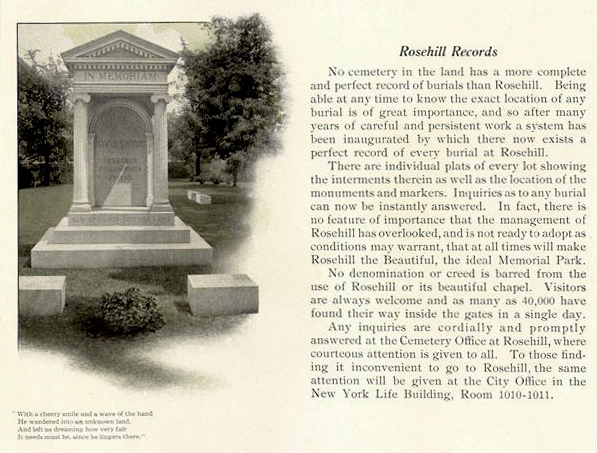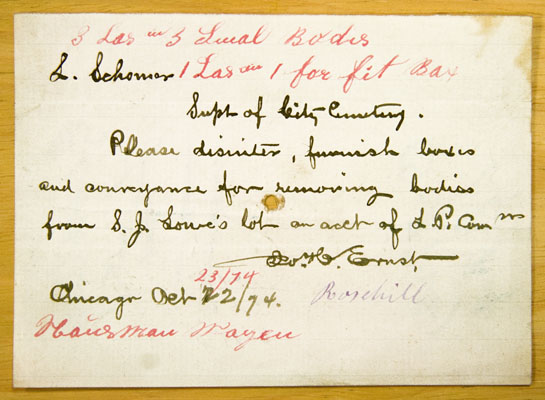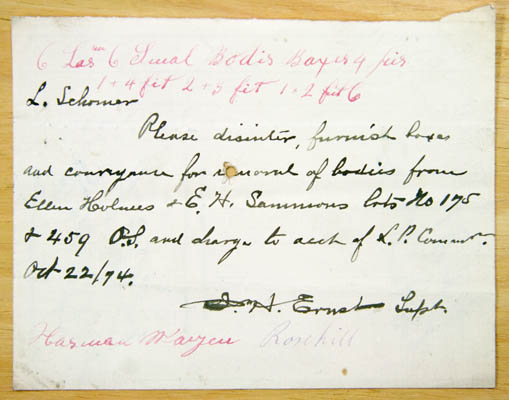
This is a reproduction from the 1908, 32-page booklet, Rosehill The Beautiful, that was offered to prospective Rosehill Cemetery lot owners. This page proudly emphasizes the thoroughness of their record keeping, with regard to burials. Today's Rosehill Cemetery does not seem to have the same access to records as described above. In conducting my research for this project, I learned that Rosehill employees are not authorized to answer any questions about their interment records, except to provide the lot location from a submitted family name. From my experience with this project, it is not clear if complete records still exist. A name submitted for the record of an interment led to the response that the individual was not within Rosehill grounds, despite the fact there is a headstone inscribed with that person's name in the cemetery.
According to Cindy Bergen's "Rosehill Cemetery: A Historical Perspective," on the Bowman Community Organization's Web Site, "Potter Palmer bought the cemetery from shareholders in approximately 1982 for the sole purpose of selling the property to developers for profit. In January 1991, Potter Palmer sold Rosehill Cemetery to the Houston-based Service Corporation International (SCI), the largest international funeral service corporation."
|
When Rosehill Cemetery opened its doors at the end of July 1859, the City Cemetery's sales of lots had been halted for nearly three months. It is unclear where families who did not already own lots in the old cemetery, buried their dead during those interim months. Burials in the City Cemetery potter's field and existing family lots continued until 1866.
Rosehill Cemetery received the City Cemetery's first disinterred remains in 1859, when it became Chicago's first private cemetery. People who owned family lots in the City Cemetery were invited to choose equal-sized lots for transfer to Rosehill Cemetery.
Chicago's city officials arranged for Rosehill Cemetery to accommodate individuals without family or the means for purchasing a larger plot, single lots for a minimal expense. (See the Common Council records detailing this arrangement, here.)
___________________________________________________________
These scraps of paper show three orders from Joseph H. Ernst, the City Cemetery superintendent, to L. Shomer, the grave digger. Shomer's notes confirm the removal of a total of nine large bodies and eleven small bodies.
 All disinterment orders by permission and courtesy of the Chicago Park District Special Collections.
All disinterment orders by permission and courtesy of the Chicago Park District Special Collections.
|

 |

